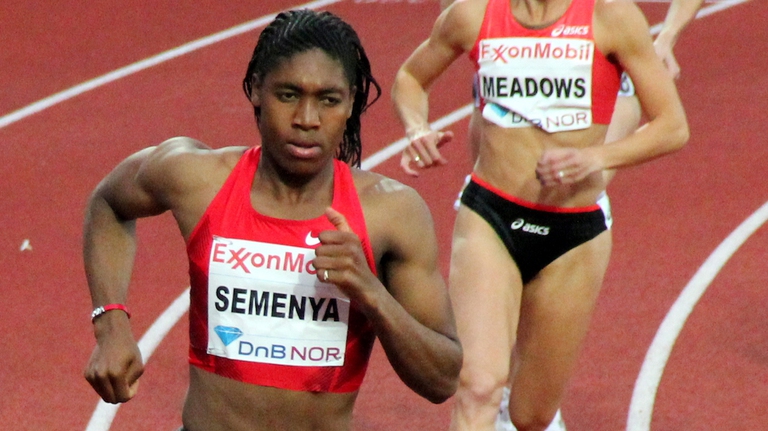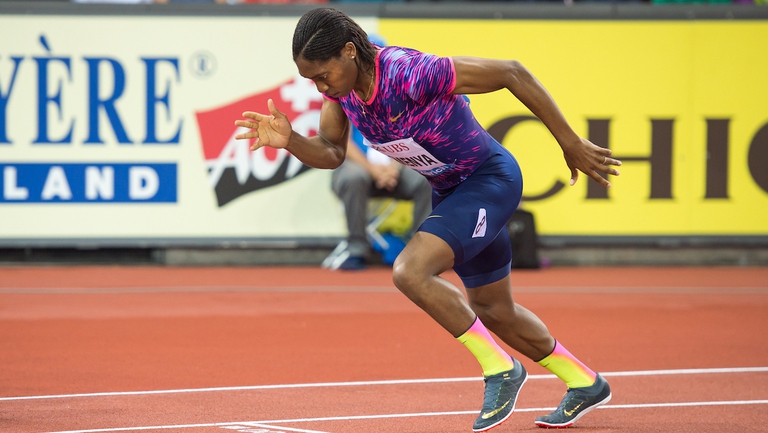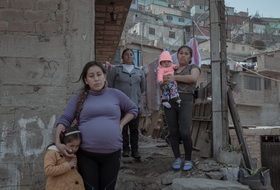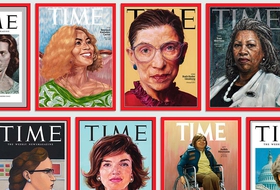
One in three women have suffered physical or sexual violence. With contributions from Europe, Africa, Asia and Latin America, we look at how this shadow pandemic affects every corner of the world.
The South African runner and Olympic champion will be forced to reduce her naturally high levels of testosterone to compete internationally. What is behind the landmark ruling in the Caster Semenya case.
Caster Semenya is a South African Olympic runner who has won gold medals at the 2009, 2011 and 2017 World Championships, as well as the London 2012 and Rio de Janeiro 2016 Olympics. She’s currently number one in the world ranking for the women’s 800 metres, representing the highest level of professional athleticism. However, she has lost her legal case appealing against International Association of Athletics Federations (IAAF) rules that impose hormone therapy on the sportswoman and others who, like her, have naturally high levels of testosterone.
According to professional sports authorities such as the IAAF, Semenya is categorised as a “differences in sex development” athlete (DSD for short). This means she has hormone levels that don’t meet the standard averages corresponding to her gender. “Athletics has two classifications: it has age, it has gender – IAAF president Sebastian Coe specified –. We’re fiercely protective about both”.
To ensure that every competing athlete has a fair chance of winning, the Court of Arbitration for Sport (CAS), an international body headquartered in Lausanne, Switzerland, aimed at resolving disputes arising in sports, has now ruled in favour of requiring DSD runners participating in international events starting from 400 metre races all way to a mile to reduce testosterone levels through medication for at least six months prior to competition.
Faced with these kinds of regulations as early as when she won her first gold medal in the 2009 World Championships, Caster Semenya, who was 18 years old at the time, was subjected to a gender verification process by the IAAF. After a period of 11 months of ineligibility to compete, she was cleared to resume her activity as a professional athlete.
— Caster Semenya (@caster800m) May 4, 2019
In 2011, the IAAF declared new rules governing the eligibility of women with hyperandrogenism (an excess of male sex hormones in females), requiring athletes in excess of 10 nanomoles per litre (nmol/L) of testosterone, associated with the lower spectrum of the male range, to reduce their levels through hormone therapy.
Four years later, after an appeal by Indian sprinter Dutee Chand, CAS suspended the IAAF’s rules on hyperandrogenism for two years. However, the latter body announced it would challenge the ruling and in April 2018, even stricter rules were put in place, forcing female athletes to maintain levels of testosterone below 5 nmol/L, halving those previously conceded. Now, following the recent ruling, Semenya will be forced to abide by the new rules after losing her legal case against the IAAF.
“I know that the IAAF’s regulations have always targeted me specifically – Semenya commented following the ruling –. For a decade the IAAF has tried to slow me down, but this has actually made me stronger. The decision of the CAS won’t hold me back. I will once again rise above and continue to inspire young women and athletes in South Africa and around the world”.
The dispute stems from the assumption that having higher levels of testosterone poses an advantage for athletes’ performance. In fact, it’s generally thought that these are correlated with higher energy levels as well as increased competitiveness. However, there’s much debate in the scientific community over the accuracy of these claims, which led to the 2015 suspension by CAS of the IAAF’s regulations. This matter was also picked up on by Semenya’s team in court, who stated that a DSD female lacking a hormone known as dihydrotestosterone (DHT) wouldn’t gain any substantial advantage from increased levels of testosterone.
There are also medical and ethical issues involved with forcing athletes to take hormone-altering medications. From a health standpoint, it’s uncertain what effects such substances may have. It’s thought these could range from triggering vastly inferior performance to early onsets of menopause. Philosophically, restrictions on DSD athletes could be interpreted as a form of condemnation of the unique traits that form the genetic makeup of world class athletes: from the Finnish cross-country skier Eero Mäntyranta, who was born with increased haemoglobin levels and won seven medals at three Winter Olympics, to the retired Jamaican superstar Usain St. Leo Bolt, considered the best sprinter of all time, with his fast-twitch muscle fibres, suited to the short bursts of explosive energy required for short distance running. In other words, exceptional traits make exceptional athletes.
None of these arguments though, take into consideration the psychological aspect of the matter. CAS itself admitted the IAAF’s policy is “discriminatory” towards athletes such as Semenya (arguing, however, that because high testosterone levels are an advantage in women’s competitions limiting them means creating a more equal playing field). Caster Semenya was born a female, grew up as a girl and matured into a woman, however sport authorities are now putting all of this into question by forcing her to either take controlled drugs or give up her discipline. In the pursuit of protecting women’s sports, there’s a risk that this ruling might instead be degrading it. The only thing that is clear is that the complexities of professional athleticism need constructive debate and informed regulation to be understood and resolved.
Siamo anche su WhatsApp. Segui il canale ufficiale LifeGate per restare aggiornata, aggiornato sulle ultime notizie e sulle nostre attività.
![]()
Quest'opera è distribuita con Licenza Creative Commons Attribuzione - Non commerciale - Non opere derivate 4.0 Internazionale.
One in three women have suffered physical or sexual violence. With contributions from Europe, Africa, Asia and Latin America, we look at how this shadow pandemic affects every corner of the world.
The Istanbul Convention against gender-based and domestic violence marks its tenth anniversary. We look at what it is, who its signatories are, and what the future might hold.
European Commission President Ursula von der Leyen reminded us of the gravity of violence against women around the world, and of the Istanbul Convention’s utmost importance.
President Erdoğan has pulled Turkey out of the Istanbul Convention, key in the fight against gender violence, claiming that it favours the LGBT community rather than family values.
Violence against women in Peru has increased as a result of Covid-19 lockdowns. 14,912 people were reported missing from January to November 2020, more than half of them minors and 64 per cent women. People have been confined to their homes for months, many forced to endure poor physical, economic and social conditions. A situation that
Joys Estefani Qqueccaño Huamani, 24, disappeared from her rural community in Peru on 9 October. Her family began looking for her independently of the authorities and despite the resistance of relatives of Joys Estefani’s ex-partner Arturo Ccana Condori, 32, charged with committing violence against her on 28 September, eleven days before Joys Estefani disappeared. Photos
Costa Rica celebrated its first same-sex marriage when two women, Alexandra Quiros and Dunia Araya, celebrated their wedding: an “extraordinary moment”.
The pandemic and its restrictions are affecting everyone, without exceptions. However factors like housing, income inequalities, gender, access to technology and working conditions are influencing how people experience the health crisis.
Time magazine’s 100 Women of the Year project sheds light on influential women’s stories, from Amelia Earhart to Greta Thunberg. A selection of some of the greats for International Women’s Day.









